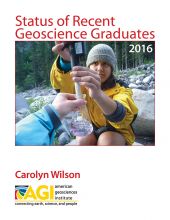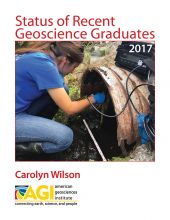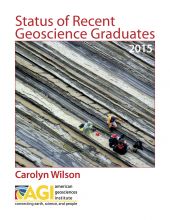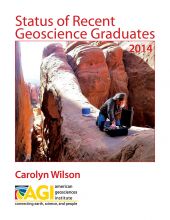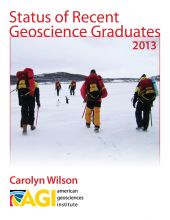The American Geosciences Institute’s (AGI) Status of Recent Geoscience Graduates 2016 provides an overview of the demographics, activities, and experiences of geoscience students that received their bachelor’s, master’s, or doctoral degrees during the 2015-2016 academic year. This research draws attention to student preparation in the geosciences, their education and career path decisions, as well as examines many of the questions raised about student transitions into the workforce.
The Status of Recent Geoscience Graduates report was first released in 2013 presenting data from spring 2013 graduates. A new report has been released each year with the data from the graduates from that academic year. This report presents the results for the end user’s consideration. Since beginning the data collection from AGI’s Geoscience Student Exit Survey, compelling trends have consistently arisen each year related to necessary experiences for developing critical skills for the workforce.
Over the past few years, participation rates in quantitative courses beyond Calculus II have been consistently low at all degree levels, and the availability of these courses to students depends on the type of institution they are attending. For example, students that attended R1 doctoral institutions were more likely to take at least one of these upper level courses compared to students that attended a liberal arts college. It has also raised the question of availability of these quantitative courses to graduate students considering it is possible that the students working on graduate degrees took these courses, like Linear Algebra and Differential Equations, as an undergraduate. Discussions with industry representatives have indicated that a lack of understanding of advanced math can affect sustained employment or advancement depending on the job expectations.
In 2016, as in previous years, nearly all geoscience graduates had at least one field experience or one research experience, and most participated in at least one of both types. These student experiences are essential for the development of critical research and field skills necessary for the geoscience workforce. The other critical experience in the development of an effective geoscience graduate is an internship. However, the majority of geoscience graduates do not participate in an internship experience before graduation. Internships are the best opportunities to learn the day-to-day experiences of a working geoscientist in particular industries, as well as provide an important net-working opportunity. While it may be difficult to create more internship opportunities, collaborations between workforce representatives, departments, and societies are needed to look at the skills development that comes from internship opportunities in an effort to find new ways to provide internship-like experiences for current students.
While many of the trends in the report have been consistent over the past three to four years, there have been some changes in the industries that hired graduates right out of school, mostly within the oil and gas industry. Due to a downturn in the oil and gas industry, in 2016, these companies focused their hiring of new employees at the master’s degree level. Concern about this downturn also negatively affected how job-seeking graduates perceived the geoscience job market. However, with oil and gas companies not hiring as many bachelor’s graduates, other industries, such as the environmental services and non-profit industries, have increased rates of new hires right out of school.
AGI recognizes the importance of continuing this research study annually and is excited about the prospect of future comparisons with other countries. Soon, AGI will be able to identify those trends that are specific to U.S. graduates compared to those that are of global concern.

